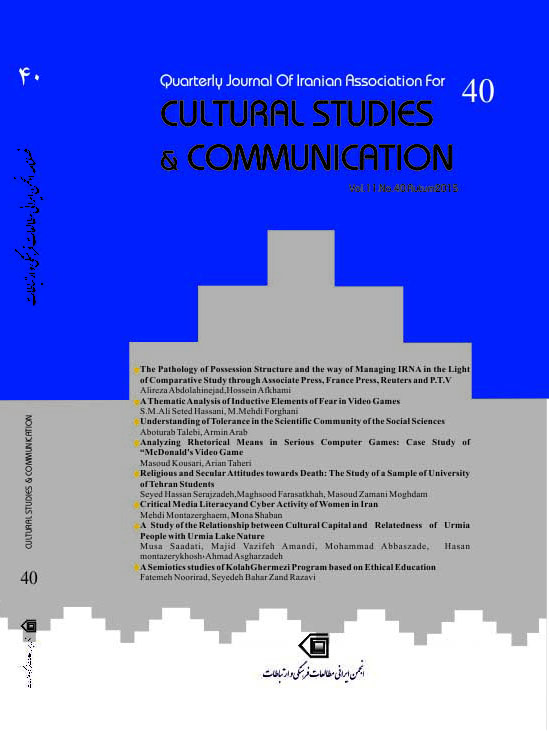Document Type : Original Article
Authors
Abstract
Kolah Ghermezi series as one of the most popular children’s TV shows which has been acclaimed by all family members in different ages. This program is listed as the children’s TV shows and it is expected to have learning content for the children. This research studies ethical-learning approach in Kolah Ghermezi program. The theoretical framework of this paper has used the “constructivism” approach in education sciences. The main question of this study is that how the learning of ethical issue is occurred. Based on the main question, all the episodes of the program were watched and three sequences which contained three ethical issues such as politeness, honesty and responsibility were selected in order to be examined by semiotic approach. The semiotics approach is conducted in this paper according to Keith Selby and Ron Cowdery pattern The results demonstrate that the educational approach conceived from the relationship between the characters, when the puppets of sitcom are taught, is closer to constructivism approach. This approach is considered as learner-based approach and requires direct contact of learner with learning current. Whereas Television is not an interactive media, certainly it can’t teach ethic to its audiences through learner-based approaches. Therefore direct explanation is used when audiences of Kolah Ghermezi, at home children, are addressed. Additionally, during the program audiences observe that some behaviors of characters are encouraged or discouraged, so it can be said in the field of teaching the child audiences, the program is closer to Albert Bandura cognitive-social learning approach.
Keywords
